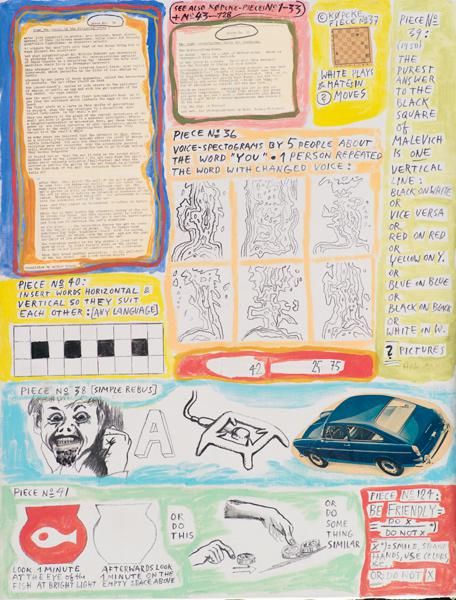
Reading-Work-Pieces No. 34-42 + 124
In the mid-1960s Arthur Köpcke worked on a series of works that he called Reading-Work-Pieces. The individual ”pieces” consist of a wide range of materials, including picture puzzles, tests used within perception psychology, long philosophical texts, crosswords, and instructions for perfectly simple everyday actions. He painted the pieces in oil on canvas, adding cuttings from newspapers or magazines.
The spectator's awareness
With his reading and training pieces, the artist wished to increase the spectators’ awareness of the systems, actions, and rituals that we persist in and carry out every day without reflecting on them. Behind the seemingly disparate and random materials, the cryptic statements, the subtly humorous tasks, and the banal pictures lies a deep interest in the functions and meanings of signs and sign systems.
The language's structure
The artist was interested in how the structure of a language unravels at the smallest touch, unveiling new semantic connections. This becomes obvious when a scientific text about the life of ants is taken out of its context, thereby becoming sheer nonsense, or when a message is “translated” from one system to another as is the case in the picture puzzle in this piece: “translated” into English, the pictures form the word MADAGASCAR.
c. 1965
Oil and mixed media on canvas
81.5 x 63.5 cm
KMS7150
Image © Arthur Köpcke Text © National Gallery of Denmark, 2018
Where you'll find this

SMK – National Gallery of Denmark
Permanent collection